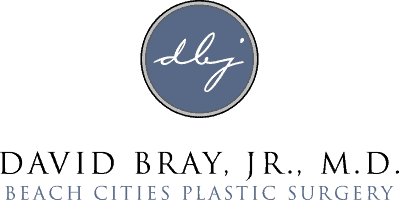Migraine Treatment
in Torrance, CA
Also serving Palos Verdes & Redondo Beach
Migraine headaches affect 12% of the US population. Migraine headaches are more common among women and affect 18% of females. Recent advances in plastic surgery have allowed the development of new and exciting surgical treatments for migraine headaches. A recent publication in the Plastic and Reconstructive Surgery Journal showed that 82 of 89 patients treated with surgery for migraine noticed at least a 50% improvement in frequency, intensity, and duration of migraine.1 A five-year outcome study showed that surgical treatment has a lasting effect.2 A placebo controlled study was also performed demonstrating the efficacy of surgical treatment.3
What is surgical treatment for migraine?
Four trigger sites have been identified that may contribute to migraine headaches. Surgical treatment of these trigger sites may eliminate or improve migraine headaches. The four common trigger sites are frontal, temporal, nasal, and occipital.
- Treatment of the frontal area consists of removal of the corrugator muscles surrounding the supraorbital and supratrochlear nerves. This surgery may be performed with an endoscopic approach or a trans-palpebral approach. The endoscopic approach is performed in a similar fashion to an endoscopic browlift. Small incisions are made in the hairline and the endoscope is used to visualize the corrugator muscle and the nerves. The muscle may then be excised. The trans-palpebral approach is performed through an upper eyelid incision. Through this incision access to the corrugator muscle is achieved and the muscle is removed. Complete excision of the muscle is performed to achieve optimal results.
- Treatment of the temporal area involves avulsion of the zygomaticotemporal branch of the trigeminal nerve. This nerve is approached through an endoscopic approach. A small incision is made in the temporal hair line and dissection is performed over the temporalis muscle. The endoscope is used to visualize and identify the zygomaticotemporal nerve. The nerve may then be avulsed.
- Treatment of the nasal trigger point involves nasal septoplasty and turbinate reduction. Rhinogenic migraine typically involves a contact point between the nasal septum and the inferior turbinate. The surgery may be performed through a closed nasal approach with a small incision on the septum allowing for removal of the deviated portion of the septum. The turbinate may be reduced by outfracture, coblation, or submucous resection. This surgery may also improve the patient’s nasal airway function.
- Treatment of the occipital area involves release of the greater occipital nerve. A small incision is made along the midline of the posterior neck. The greater occipital nerve is then identified and released from constricting bands, blood vessels, or muscle. In most cases the nerve is released on both sides.
Who may benefit from surgical treatment for migraines?
Patients diagnosed with chronic migraine defined as 15 or more migraines per month may benefit from surgical treatment. In addition some patients suffering from episodic migraine or refractory migraine headaches may also benefit.
How is a trigger point diagnosed?
A thorough evaluation is performed of each patient. Patients are asked to describe the location of their pain. Patients with pain over the frontal, temporal, or occipital area may be tested with a nerve block or Botox. In the frontal area a nerve block will be performed on the supraorbital and supratrochlear nerves. Botox may also be injected into the corrugator muscle. For temporal headaches, Botox may be injected into the temporalis muscle. Botox may also be injected into the occipital area. A positive response is defined as a 50% reduction in headaches following the Botox injection.These injections may be performed at 1 month intervals in an attempt to identify the specific trigger point or the multiple trigger points. Patients may be content with Botox injections alone if they provide significant relief. However, a positive response to Botox suggests that surgical treatment may be beneficial. The nasal trigger point is diagnosed based on symptoms such as retro-orbital pain, nasal obstruction, failure of Botox, improvement with nasal sprays, worse symptoms at night, and a physical exam revealing septal deviation frequently with a contact point with the inferior turbinate.
Team approach:
It is important that patients with migraine be evaluated by a neurologist. In many cases medical treatment or physical therapy may be adequate treatment. Patients who may benefit from surgical treatment should see a plastic surgeon trained in surgical treatment of migraine. Dr. David Bray, Jr. is board certified in plastic surgery and otolaryngology. He has additional training in surgical treatment of migraine.
References:
- Guyuron, B., Kriegler, J., Davis, J., Amini, S. Comprehensive Surgical Treatment of Migraine Headaches. Plastic and Reconstr. Surg. 115: 352, 2005.
- Guyuron, B., et al. Five Year Outcome of Surgical Treatment of Migraine Headaches. Plastic and Reconstr. Surg. 127: 603, 2011.
- Guyuron, B. et al. A Placebo-Controlled Surgical Trial of the Treatment of Migraine Headaches. Plastic and Reconstr. Surg. 124: 46, 2009.


